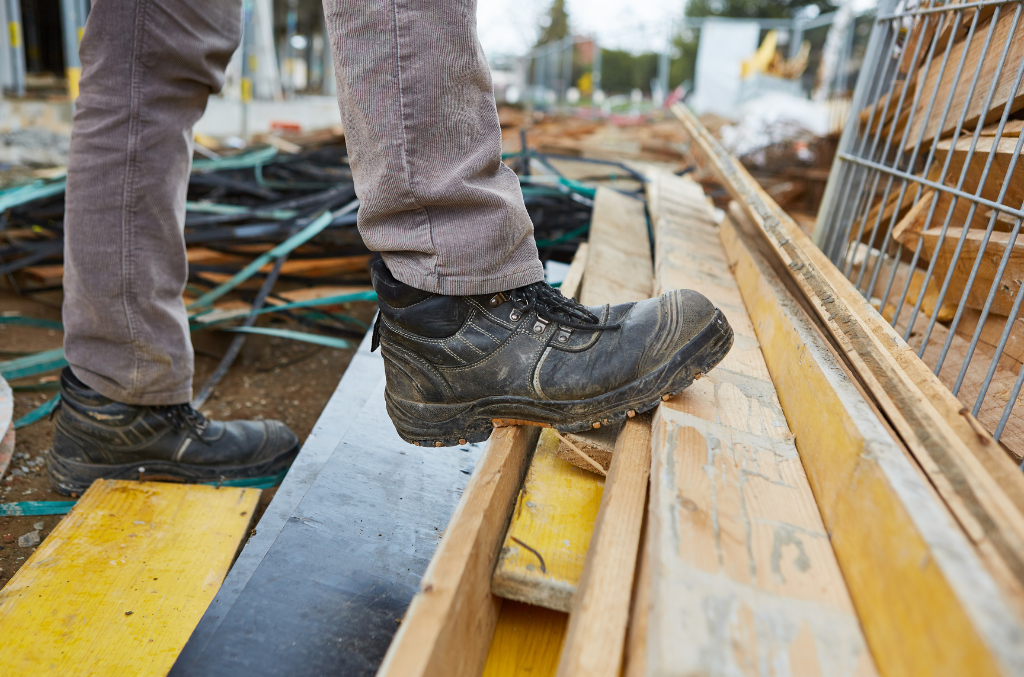Safety
Foot Protection: A Comprehensive Guide to Safeguarding Your Feet at Work
Foot protection is a critical aspect of workplace safety, especially in industries such as manufacturing, healthcare, education, and building services. Ensuring that your feet are adequately protected not only prevents injuries but also enhances overall job performance. This comprehensive guide will introduce you to different types of foot protection, tips for selecting the right footwear, proper usage and maintenance, and address frequently asked questions about foot protection in the workplace.
Understanding Different Types of Foot Protection
- Safety Shoes: Safety shoes are designed to provide protection and support for various workplace hazards. They typically feature reinforced toe caps, puncture-resistant soles, and slip-resistant outsoles. Safety shoes are suitable for environments with falling or rolling objects, sharp objects on the ground, or slippery surfaces.
- Steel-Toe Boots: Steel-toe boots are a popular choice for heavy-duty foot protection, featuring a steel cap over the toe box. These boots are ideal for work environments with a high risk of crushing or puncturing hazards, such as construction sites, manufacturing facilities, and warehouses.
- Metatarsal Guards: Metatarsal guards protect the top of the foot from impact and crushing injuries. They can be integrated into safety footwear or worn separately as an attachment. Metatarsal guards are recommended for jobs that involve handling heavy materials or working with machinery that could cause injury to the top of the foot.
- Slip-Resistant Shoes: Slip-resistant shoes have specially designed outsoles that provide extra traction on slippery surfaces. These shoes are perfect for workers in the food service industry, healthcare facilities, or any environment where spills and slippery floors are common.
- Insulated Boots: Insulated boots are designed to keep your feet warm and comfortable in cold working conditions. They often feature waterproof materials and insulation to provide warmth and protection against the elements. Insulated boots are ideal for outdoor workers, such as those in construction, agriculture, or utility services.
- Electrical Hazard Footwear: Electrical hazard footwear is designed to protect workers from electrical shocks, offering insulation and reducing the risk of injury in case of contact with live electrical circuits. This type of footwear is essential for electricians, maintenance workers, and other professionals who work with or around electricity.
Proper Usage and Maintenance of Foot Protection
Correctly Putting on and Taking off Foot Protection
Properly putting on and taking off your foot protection ensures optimal protection and prolongs its lifespan. Always follow the manufacturer’s instructions for securing and adjusting your footwear. Make sure your feet are clean and dry before putting on your safety footwear, and remove any debris or dirt before taking them off.
Cleaning and Storage Best Practices
Regular cleaning and proper storage are essential to maintain the effectiveness and longevity of your foot protection. Clean your footwear according to the manufacturer’s recommendations, and store them in a dry, well-ventilated area, away from direct sunlight or extreme temperatures.
Inspecting for Damage and Replacement
Regularly inspect your foot protection for signs of wear, damage, or defects that may compromise its protective qualities. Replace your footwear immediately if you notice any issues, such as cracks, punctures, or worn-out soles.
Tips for Choosing the Right Foot Protection
- Assessing Workplace Hazards: Before selecting foot protection, it’s essential to evaluate the specific hazards present in your workplace. Consider factors such as the potential for falling or rolling objects, sharp objects on the ground, slippery surfaces, exposure to chemicals, and electrical hazards.
- Considering Comfort and Fit: Comfort is crucial when selecting foot protection, as uncomfortable footwear can lead to foot fatigue and reduced job performance. Ensure that your chosen footwear fits well, offers adequate cushioning, and provides the necessary support for your feet.
- Evaluating Material and Durability: Foot protection should be made from high-quality materials that can withstand the rigors of your work environment. Consider the type of material, its resistance to wear and tear, and its ability to protect against specific hazards.
- Checking for Certifications and Standards Compliance: Ensure that your chosen foot protection meets the relevant safety standards for your industry, such as ASTM, ANSI, or ISO. Look for certifications and labels that indicate the footwear’s compliance with these standards.

Frequently Asked Questions
Selecting the right foot protection is crucial for workplace safety and optimal job performance. Assess your work environment’s specific hazards, prioritize comfort and fit, and ensure your chosen footwear complies with relevant industry standards. With proper usage and maintenance, your foot protection will serve you well, keeping your feet safe and comfortable throughout your workday.
Step into safety with our wide range of foot protection options at our eCommerce store. Browse and buy safety shoes, steel-toe boots, and more to protect your feet at work in manufacturing, distribution, healthcare, education, and building services industries.

